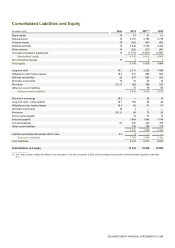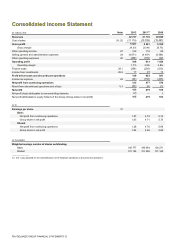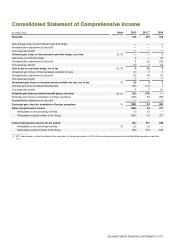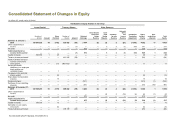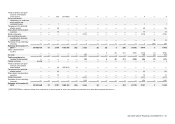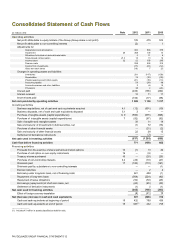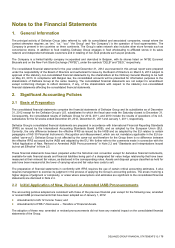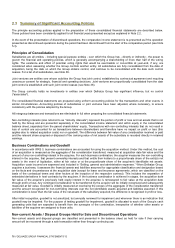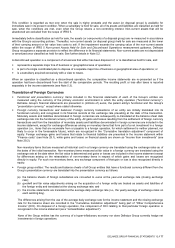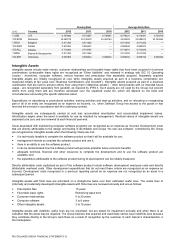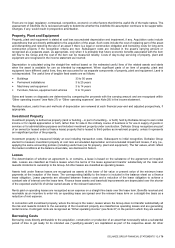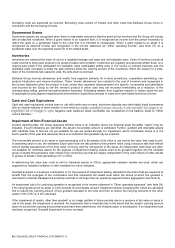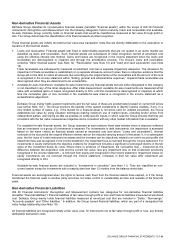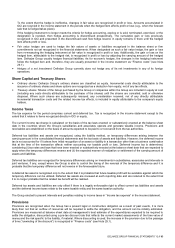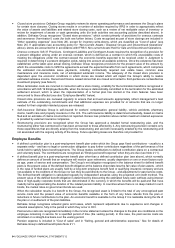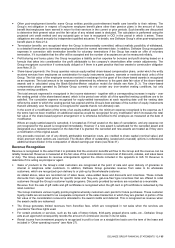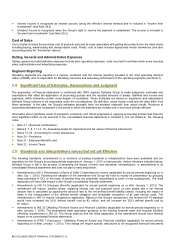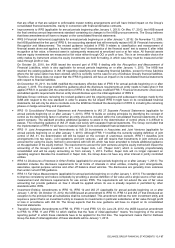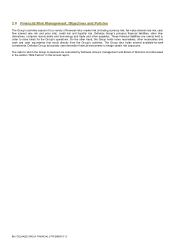Food Lion 2012 Annual Report Download - page 81
Download and view the complete annual report
Please find page 81 of the 2012 Food Lion annual report below. You can navigate through the pages in the report by either clicking on the pages listed below, or by using the keyword search tool below to find specific information within the annual report. DELHAIZE GROUP FINANCIAL STATEMENTS ’12 // 79
There are no legal, regulatory, contractual, competitive, economic or other factors that limit the useful life of the trade names. The
assessment of indefinite life is reviewed annually to determine whether the indefinite life assumption continues to be supportable.
Changes, if any, would result in prospective amortization.
Property, Plant and Equipment
Property, plant and equipment is stated at cost less accumulated depreciation and impairment, if any. Acquisition costs include
expenditures that are directly attributable to the acquisition of the asset. Such costs include the cost of replacing part of the asset
and dismantling and restoring the site of an asset if there is a legal or constructive obligation and borrowing costs for long-term
construction projects if the recognition criteria are met. Subsequent costs are included in the asset’s carrying amount or
recognized as a separate asset, as appropriate, only when it is probable that future economic benefits associated with the item
will flow to the Group and the cost of the item can be measured reliably. Costs of day-to-day servicing of property, plant and
equipment are recognized in the income statement as incurred.
Depreciation is calculated using the straight-line method based on the estimated useful lives of the related assets and starts
when the asset is available for use as intended by management. When significant parts of an item of property, plant and
equipment have different useful lives, they are accounted for as separate components of property, plant and equipment. Land is
not depreciated. The useful lives of tangible fixed assets are as follows:
Buildings 33 to 50 years
Permanent installations 3 to 25 years
Machinery and equipment 3 to 14 years
Furniture, fixtures, equipment and vehicles 5 to 10 years
Gains and losses on disposals are determined by comparing the proceeds with the carrying amount and are recognized within
“Other operating income” (see Note 27) or “Other operating expenses” (see Note 28) in the income statement.
Residual values, useful lives and methods of depreciation are reviewed at each financial year-end and adjusted prospectively, if
appropriate.
Investment Property
Investment property is defined as property (land or building - or part of a building - or both) held by Delhaize Group to earn rental
income or for capital appreciation or both, rather than for sale in the ordinary course of business or for use in supply of goods or
services or for administrative purposes and includes investment property under construction. Delhaize Group recognizes any part
of an owned (or leased under a finance lease) property that is leased to third-parties as investment property, unless it represents
an insignificant portion of the property.
Investment property is measured initially at cost including transaction costs. Subsequent to initial recognition, Delhaize Group
elected to measure investment property at cost less accumulated depreciation and accumulated impairment losses, if any (i.e.,
applying the same accounting policies (including useful lives) as for property, plant and equipment). The fair values, which reflect
the market conditions at the balance sheet date, are disclosed in Note 9.
Leases
The determination of whether an agreement is, or contains, a lease is based on the substance of the agreement at inception
date. Leases are classified as finance leases when the terms of the lease agreement transfer substantially all the risks and
rewards incidental to ownership to the Group. All other leases are classified as operating leases.
Assets held under finance leases are recognized as assets at the lower of fair value or present value of the minimum lease
payments at the inception of the lease. The corresponding liability to the lessor is included in the balance sheet as a finance
lease obligation. Lease payments are allocated between finance costs and a reduction of the lease obligation to achieve a
constant rate of interest over the lease term. Finance lease assets and leasehold improvements are depreciated over the shorter
of the expected useful life of similar owned assets or the relevant lease term.
Rents paid on operating leases are recognized as an expense on a straight-line basis over the lease term. Benefits received and
receivable as an incentive to enter into an operating lease are spread over the relevant lease term on a straight-line basis as a
reduction of rent expense.
In connection with investment property, where the Group is the lessor, leases where the Group does not transfer substantially all
the risk and rewards incident to the ownership of the investment property are classified as operating leases and are generating
rental income. Contingent rents are recognized as “Other operating income” (see Note 27) in the period in which they are earned.
Borrowing Costs
Borrowing costs directly attributable to the acquisition, construction or production of an asset that necessarily takes a substantial
period of time to get ready for its intended use (“qualifying assets”) are capitalized as part of the respective asset. All other


